STRV 2000
The never realized supertank

In the late eighties it became
apparent that Strv 101R, 102R, 103C and Strv 104 were inadequate against the
evolving threat. To prepare for purchase of foreign tanks an M1A1 and a Leopard
2 were borrowed for a year to help formulate technical specifications for a new
tank. A swedish concept was studied as well. It was influenced by the
experiences with the "S" and the lessons learned from the trials with
the UDES 03, UDES 19 and the UDES-XX-20 in the late seventies and early
eighties.
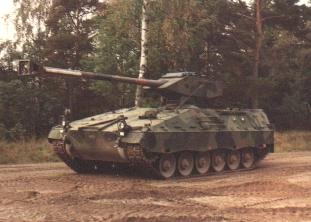
UDES 19
The UDES 03 was a test vehicle were
the concept of an elevating gun mounted on a turretless chassie was tested and
found workable. The UDES 19 was a german Marder with a 10,5 cm gun was mounted
on top of the vehicle to test the feasability of a external tank gun in a low
profile top mounted turret.
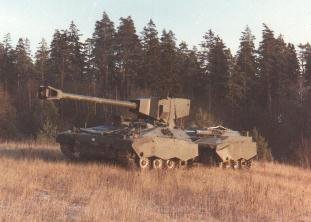
UDES-XX-20
The UDES-XX-20 was ready for testing
in 1981. It was based on the Hägglunds BV 206 and had double waiststeering and
an external 12 cm tank gun. While mobility was very good the concept is more
expensive than tracksteering. The vehicle weighed 25 tons.
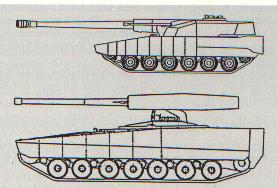
The two concepts described below. They are not to scale.
The earlier experiences led to two
different concepts for further study. The first with an external gun mounted on
an almost invisible turret and the second with a compact turret. The second
concept was chosen for further study and a full scale wooden mock up was
constructed. The tank was to weigh 55 tons and have modular armor for easy
upgrading, a front mounted engine, a 14 cm smoothbore autoloaded gun firing
APFSDS only. For softer targets than tanks the coaxial 40 mm autocannon firing
APFSDS and HE was to be used, or the 7,62 mm coaxial Ksp m/39. The gunner and
commander was to sit on the right side of the turret. The tank was of
course to have a state of the art C3I-system. The importance of IRV had not been
recognized when the study started so instead of an adequate IRV the Lyran
illumination round mortars were to used. But the studies had clearly shown that
the cost for developing a swedish tank was prohibitive compared to foreign
purchase. In 1991 the decision to buy a forign design was taken.
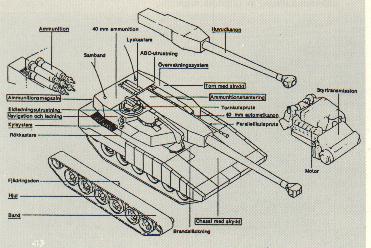
Strv 2000 with its components.
The Strv 2000 was a tankers wet dream.
With firepower that isnt matched even ten years later and a level of protection
that not even the Strv 122 can compete with it would have been the totally
dominant titan of any battlefield. Sadly but naturally its cost was equally
impressive. The possibility to export it was slim as most potential customers had
already bought the Leopard 2. One must also consider the unavoidable delays and
cost increases the design inevitably would have suffered from. But what a
mashine!
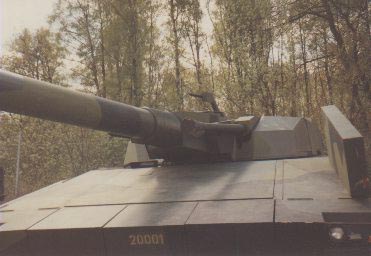
This picture of the wooden mock up shows the 40 mm coaxial
autocannon and the turret and hull front.
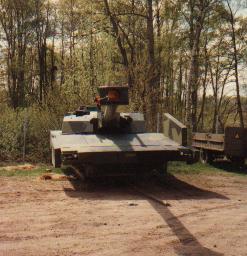
This picture of the wooden mock up shows the well sloped
hull front and the low turret. The muzzle brake is rather impressive in size.
The left frontal sidecover is in its raised position for maintainance.
In 1989-1990 an M1A1 and a Leopard 2
had been borrowed for testing to help setup a technical specification as to howa
new tank should be able to perform. Two years later foreign bidders entered
their designs. The contestants were the M1A2, Leopard 2S and the Leclerc. The
british Challenger II was not entered since the british put priority to run the
Challenger through desert tests.
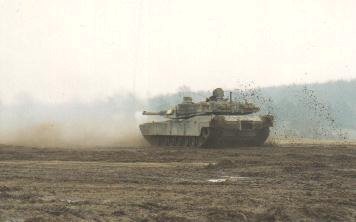
The M1A2
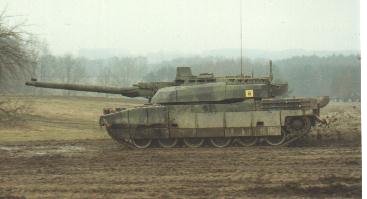
The Leclerc
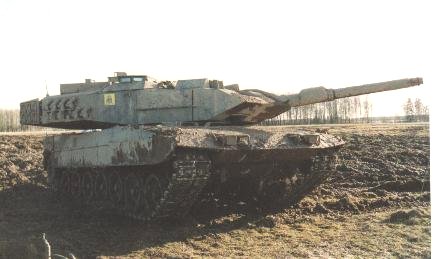
The Leopard 2S
After a year of extensive testing the
Leopard 2S was selected. It was found that some further modification was
desirable and the final procuct, Strv 122, is probably the best tank in the
world. As you can see from the picture below it is clearly better protected than
the original Leopard 2S that in itself had outstanding protection.
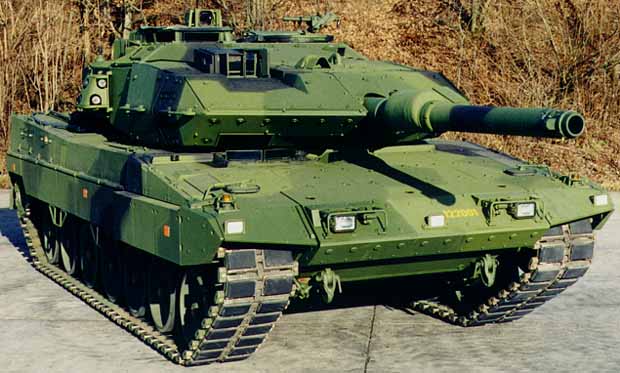
... and the winner is: STRV 122!




